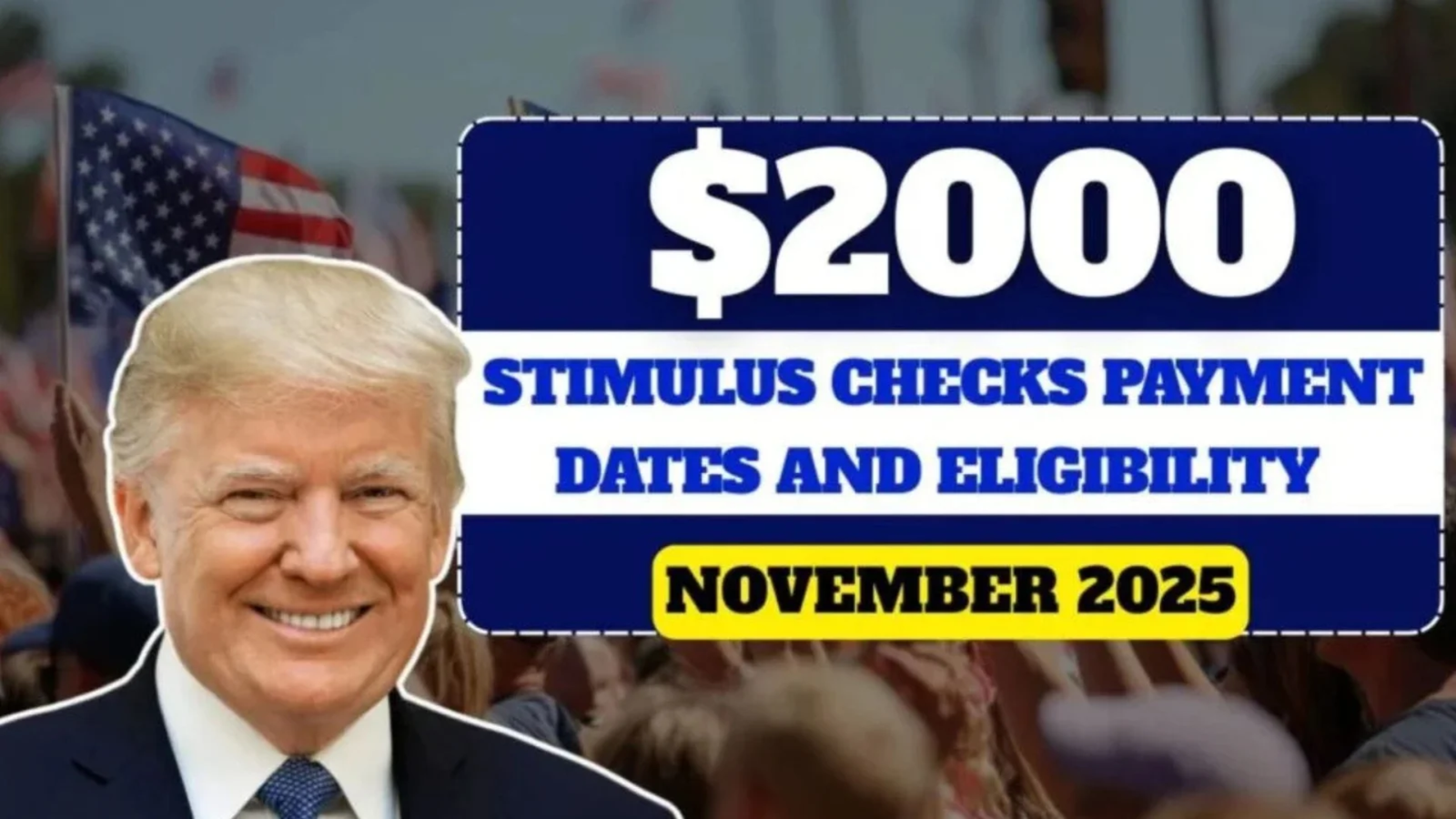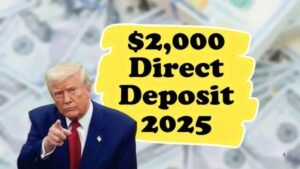Your $2000 IRS Direct Deposit in November 2025: Excited about a potential $2,000 boost from the IRS this November? As of November 20, 2025, millions of Americans are checking their accounts for this timely relief amid rising costs for groceries, rent, and bills. This straightforward guide covers who qualifies, when payments hit, and simple actions to secure yours—helping you plan for the holidays without stress.
Understanding the $2,000 IRS Direct Deposit Program
The IRS is rolling out a one-time $2,000 payment in November 2025 to support everyday Americans facing economic pressures. Known as the 2025 Financial Relief Deposit, it’s designed to ease burdens from inflation and higher living expenses. Unlike regular benefits like Social Security or disability payments, this is extra cash that won’t reduce your ongoing support. Most recipients get it tax-free, and it’s sent automatically based on your recent tax filings—no complex applications needed.
Simple Eligibility Criteria: Who Gets the Full $2,000?
Qualifying is straightforward, focusing on basic residency, income, and tax status. The IRS uses your 2023 or 2024 tax return to check details, so accuracy matters. Here’s what you need:
- Be a U.S. citizen or legal permanent resident (like green card holders).
- Have a valid Social Security Number (SSN) or Individual Taxpayer Identification Number (ITIN).
- Be at least 18 years old by the end of 2025.
- Your adjusted gross income (AGI)—that’s your total earnings minus deductions—from 2024 must fall under set limits.
- Not be listed as a dependent on another person’s tax return.
- Have filed a federal tax return for 2023 or 2024 (even if you owed nothing).
This includes seniors on Social Security, people with disabilities, veterans, and low- to middle-income workers. If your income exceeds the limits, you might get a partial amount or nothing, but most families qualify fully.
Eligibility Income Limits Table
| Filing Status | Maximum AGI for Full $2,000 | Partial Payment Range |
|---|---|---|
| Single | $75,000 or less | $75,001–$99,000 (reduced) |
| Married Filing Jointly | $150,000 or less | $150,001–$198,000 (reduced) |
| Head of Household | $112,500 or less | $112,501–$136,500 (reduced) |
| Above Limits | Over the thresholds | $0 (no payment) |
Key Payment Dates: When Will Your $2,000 Arrive?
With today being November 20, 2025, many deposits are already processing or landing in accounts. The IRS spreads payments in batches to keep things smooth, based on your SSN’s last two digits or filing status. Direct deposits started mid-month, with checks following soon after. If you’re in the second wave, check your bank now!
November 2025 Payment Schedule Table
| Batch/Group | Direct Deposit Date | Paper Check Mailing Date |
|---|---|---|
| Early Filers/SSN 00–49 | November 15, 2025 | November 18, 2025 |
| Mid Filers/SSN 50–99 | November 22, 2025 | November 25, 2025 |
| Late Filers/Non-Direct Deposit | November 29, 2025 | December 2–5, 2025 |
| Benefit Recipients (Auto) | With Regular November Pay | N/A (Direct Only) |
Track your status on the IRS “Get My Payment” tool at IRS.gov starting November 15. Updates show as “processed” once sent.
Easy Steps to Claim and Receive Your Payment
Most people get this automatically, but a few quick checks ensure you don’t miss out. Follow this simple checklist:
- Review Your 2024 Taxes: If not filed, use IRS Free File (for incomes under $79,000) or e-file by December 31, 2025. Zero-income filers qualify too—just submit a basic return.
- Update Bank Details: Log into your IRS online account to confirm or add direct deposit info (routing and account numbers).
- Verify Address: Change it via IRS.gov if you’ve moved since your last filing.
- Set Up Alerts: Enroll in SSA or VA notifications if you’re a benefit recipient for automatic inclusion.
- Monitor for Notices: Expect Letter 6475 in the mail confirming your amount—ignore scam calls demanding info.
Direct deposit is quickest (1–3 days), while checks take 7–10 days extra. No fees involved, and the IRS never asks for payment upfront.
Myths Busted: Clearing Up Common Confusions
Rumors spread fast, but here’s the truth in a simple table:
Myths vs. Facts Table
| Common Myth | Straight Fact |
|---|---|
| Only low earners get the full amount | Middle-income up to $75K/$150K qualify fully |
| You need a new application form | Automatic for tax filers—no extra steps |
| It counts as taxable income | Tax-free for most; only high earners report |
| Delays if on benefits like SSDI | Added to your regular payment—no cuts |
| Non-citizens or dependents qualify | U.S. residents only; no dependents |
Frequently Asked Questions (FAQ)
Q: I’m on Social Security—do I need to do anything special? A: No, it’s added automatically to your November benefit. Just ensure your bank info matches SSA records.
Q: What if I didn’t file 2024 taxes yet? A: File now using free tools on IRS.gov. Even simple returns work, and it’s due by April 2026, but act fast for this payment.
Q: Is this payment a loan or repayable? A: Absolutely not—it’s free relief money with no strings attached.
Q: Can families with mixed citizenship status claim it? A: Yes, if the filer has an SSN/ITIN and meets income rules; spouses without one still count in joint filings.
Q: Why haven’t I seen my deposit by November 20? A: Check your batch date above. Use the IRS tool or call 800-829-1040 after November 25 if missing.
Q: Does this affect my 2025 taxes? A: Rarely—only if your total income pushes you over limits, a small portion might be reported next year.



